|
When I pulled the transmission and clutch from the donor car, the
owner told me that he bought it cheap because there was a "problem
with the clutch," and they could not fix it. Having dealt with
the corner mechanic's response to Citroen systems in the past, I've
learned to discount prophecies of doom from said mechanics. Sure
enough, when I installed the whole system and bled it out, it would
not declutch. So, out it came, and it got a nice cleaning and
reassembly. Citroen hydraulic mechanisms are elegantly simple.
In most cases, the only moving part is a piston within a sleeve. The
piston slides within a cylinder with only a thin layer of LHM as
lubricant. What makes this
possible is the precise machine work of the parts. The piston is
only microns smaller than the cylinder. Small enough to allow a
layer of LHM to bathe the parts, but large enough to prevent a large
leak. |
| |
|
I've made some of these images as large as possible, to help viewing. |
| First, the exploded diagram: |
 |
| This is the slave cylinder as it was when
I pulled it from the car. The piston (4)
is in the 'fully-out' position, pressed up against a
steel retaining ring(19). The ring is
held in place by a snap-ring spring(7). |
|
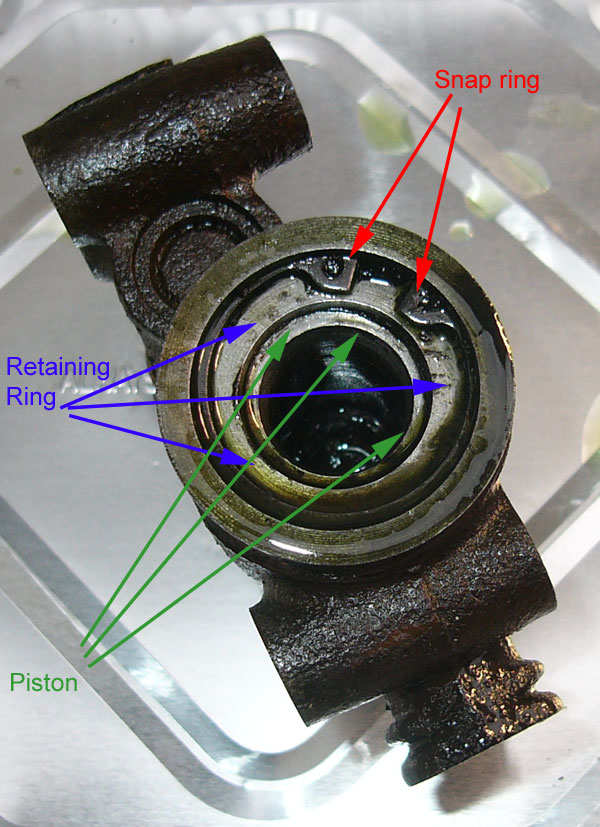 |
| |
I've removed the snap ring; you can
see it at the right. I'm removing the retaining ring with the
snap-ring pliers. You can see the piston in the
'fully-out' position in the body of the slave cylinder. I now
see why the clutch was not operating. The piston was lodged in the
'fully-out' position, so it could not actuate the clutch.
Visible in the photo is the rubber boot (8). |
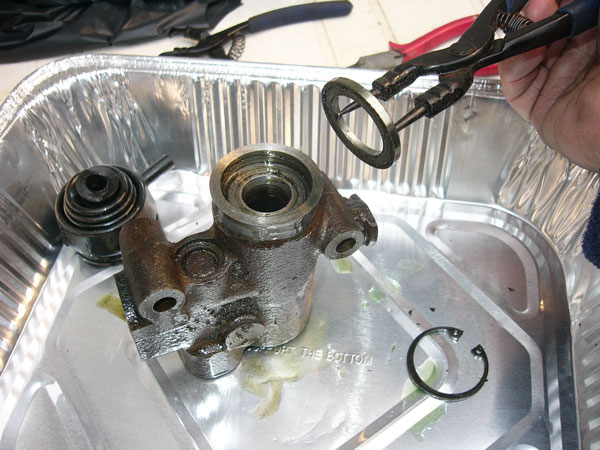 |
|
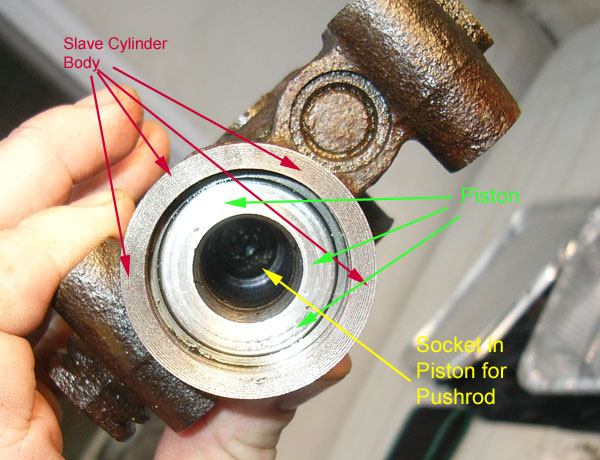 |
I tapped the piston back into the
cylinder to loosen it. It took one tap with a rubber mallet on
the socket. I irrigated the cylinder with LHM both on this side
and also through the master-cylinder & bleed hole connections.
Once the piston was loosened and irrigated, it slid out of the
cylinder very easily. |
 |
Piston(4) is 57mm in length.
Note the differences in diameters along the length. The
white stripe on the right is a teflon ring(14). The darker stripe is
a ring of felt(20). Once saturated with LHM, it acts as a seal
between the pressure side of the piston and the rubber-booted side of
the piston. |
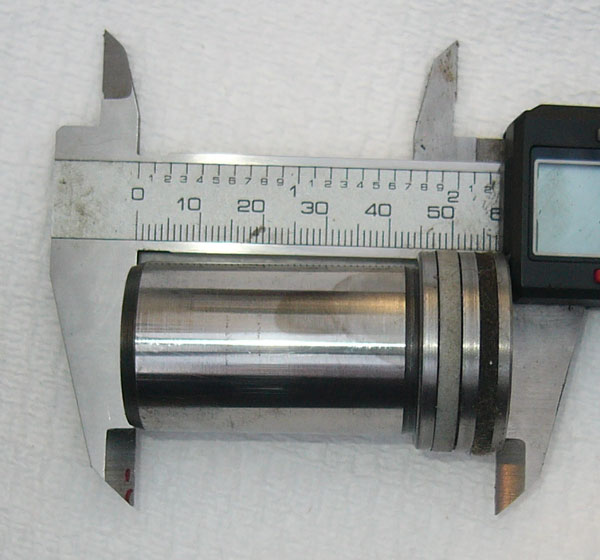 |
| Piston is 31mm in diameter at the narrow
part. You can tell the quality of the machining of this piece by
looking at the caliper's reflection in the piston. |
|
 |
| Narrow part of piston is 44mm. |
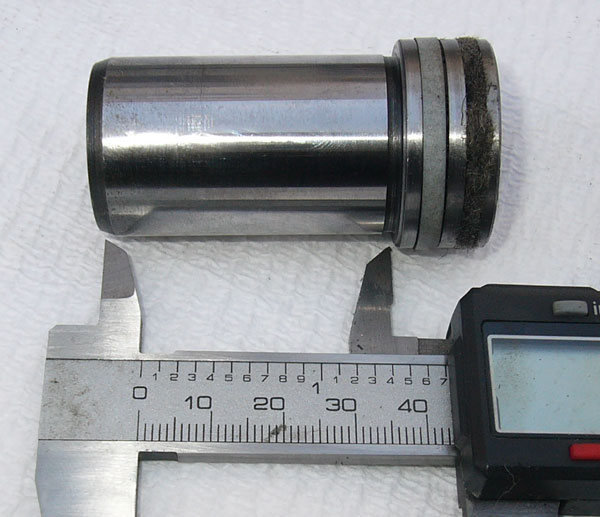 |
| Depth of pushrod cavity is 52mm. |
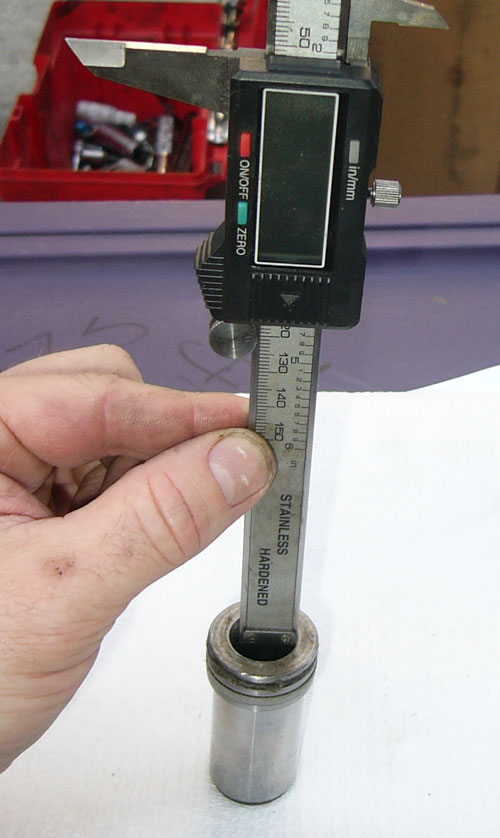 |
| I gave the mechanism a good cleaning and
a coat of paint. |
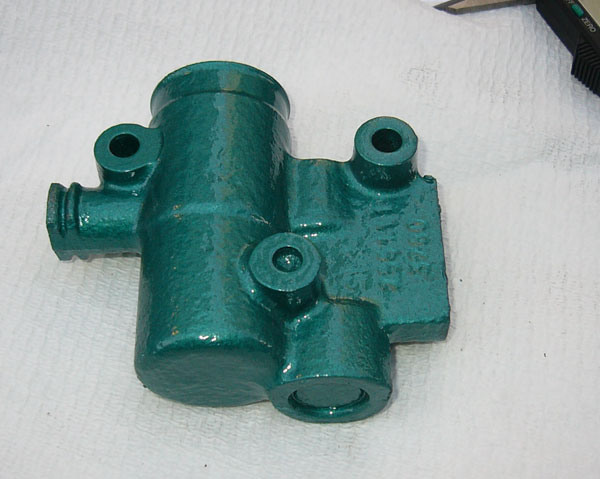 |
| The threaded connections got a very
gentle cleaning. Bits were flushed out with mineral spirits. |
 |
| Components were irrigated with LHM before
reassembly. |
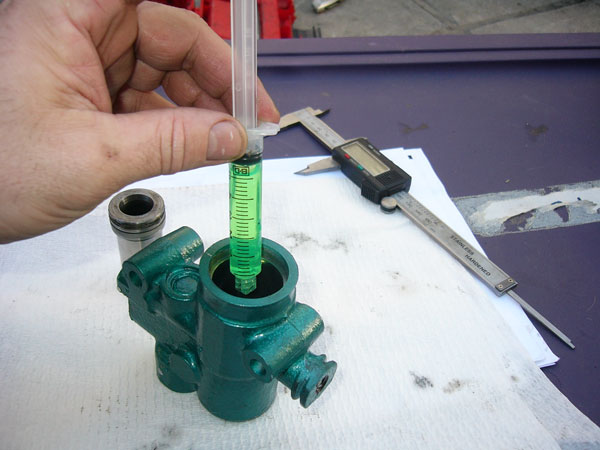 |
| The piston is inverted in this photo - I
wanted to saturate the felt ring on the outside edge. |
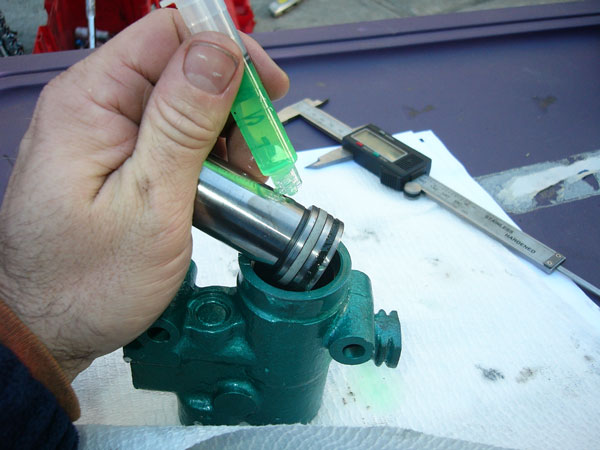 |
| |
| |
| |
| |
| |